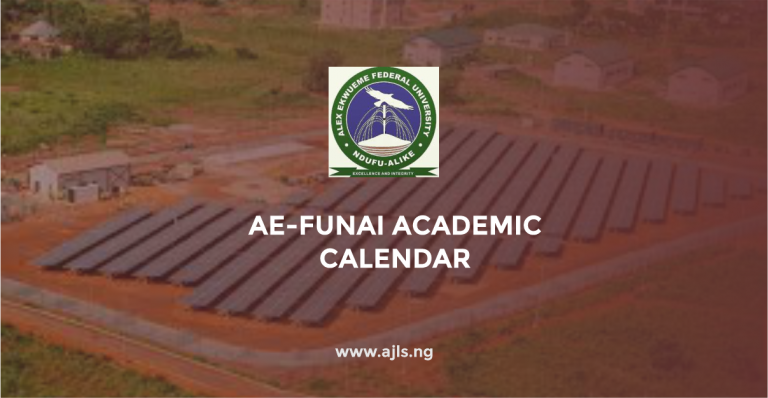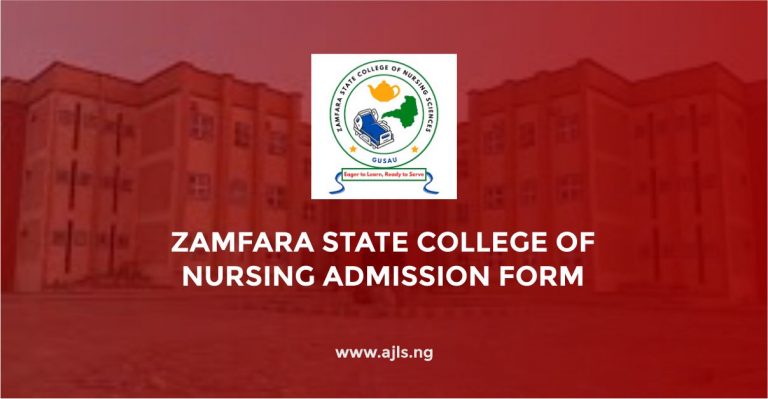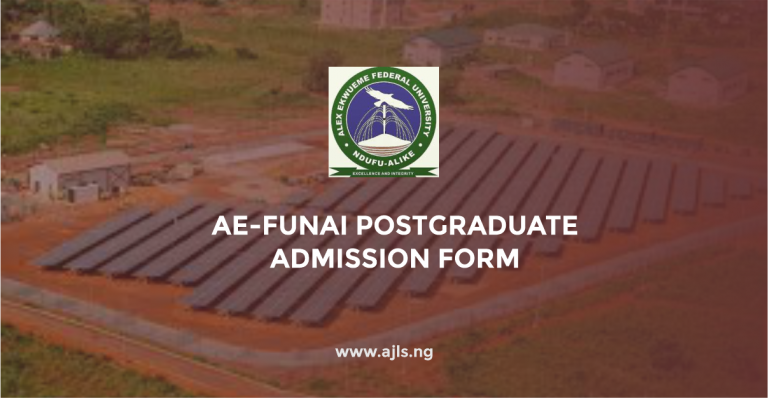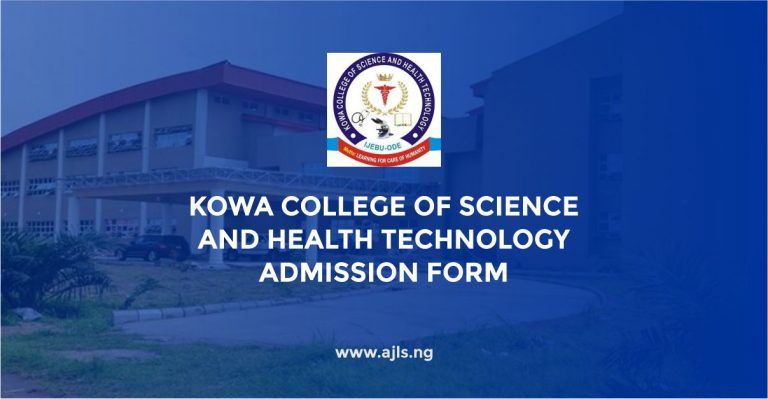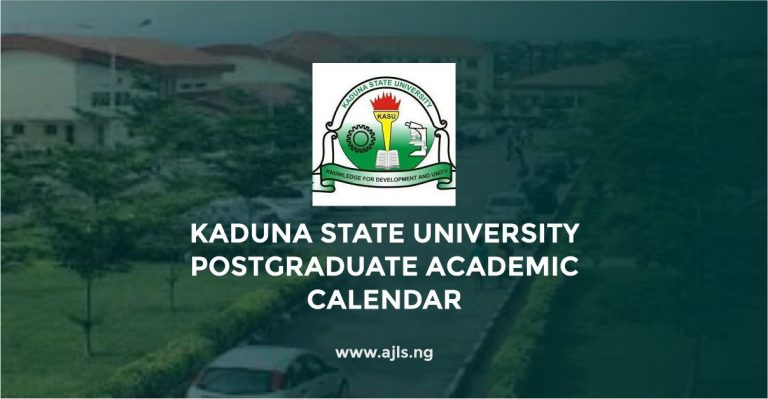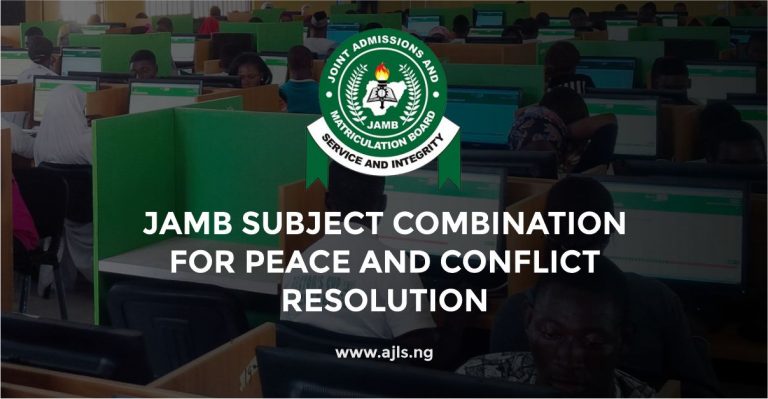WAEC Syllabus For Geography 2025
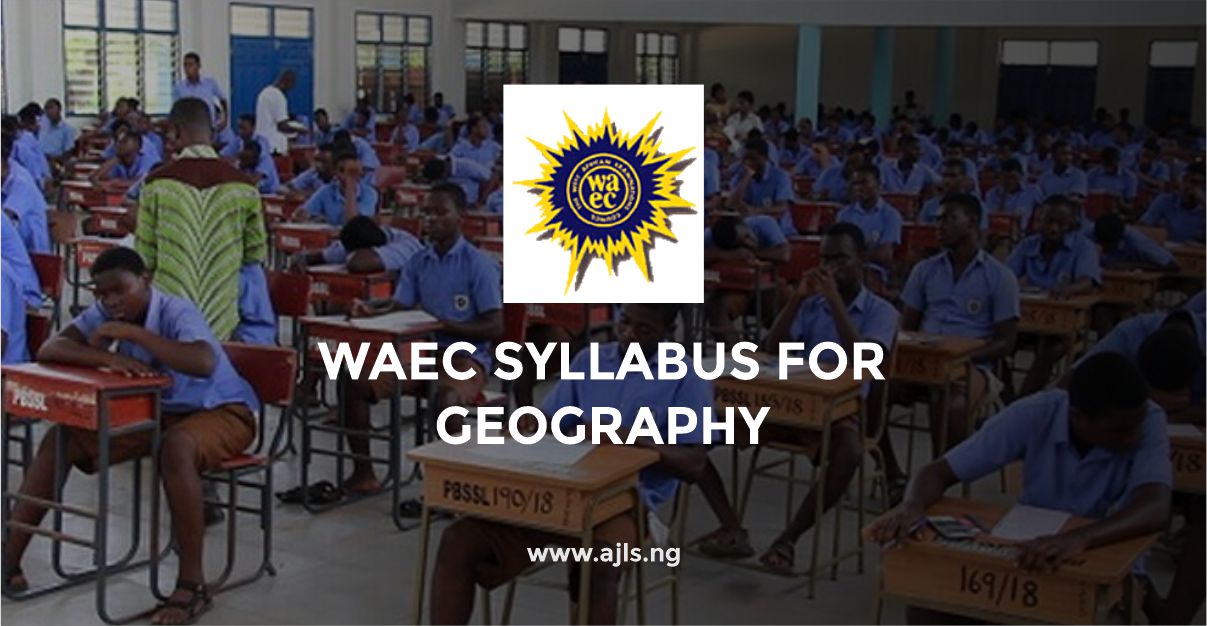
The West African Examinations Council (WAEC) has officially released the syllabus for Geography. Candidates who have registered for the WAEC Geography examination are advised to use the WAEC Syllabus for Geography as a study guide, as only the topics listed will be covered in the exam.
The WAEC Syllabus for Geography outlines the specific areas that candidates are expected to focus on, ensuring they know exactly what to read and prepare for. It also highlights the learning objectives for each topic, helping students understand the key concepts and skills required.
If you have not yet seen the syllabus, you can check below to view or download it in PDF format for reference. Additionally, a list of recommended textbooks is provided to further assist you in your preparation and help you achieve a high score in the examination.
WAEC Syllabus For Geography
| SN | TOPICS | OBJECTIVES |
| THEME | ||
| 1 | ELEMENTS OF PRACTICAL AND PHYSICAL GEOGRAPHY Map work*Principles of elementary surveying**Geographic Information System (GIS)Statistical maps and diagramsElements of Physical Geography*Hydrosphere(i) Rocks(ii) Tectonic processes(iii) Denudational processes(iv) Weather and climate(v) Climate (a) Elements(b) Classification** (c ) Climate change*(vi) Vegetation*(vii)Soil(vii)The environment(a) Environmental resources(b) Environmental problems/ hazards(c) Environmental conservation | Maps: meaning, types and uses. Map reading and interpretation based on contoured survey maps of parts of West Africa: scale, measurement of distances, direction and bearing, map reduction and enlargement, identification of physical features such as spurs, valleys, etc. and cultural features such as city walls, settlements, communication routes, etc.; measurement of gradients, drawing of cross profiles, inter-visibility, description and explanation of drainage characteristics and pattern; patterns of communication, settlement and land use.Definitions of terms, instruments, chain and prismatic compass, plotting of traverse, avoiding obstacles in the field.GIS: Basic concepts, components (hardware, software, data, procedures and experts); sources of data (land surveying, remote sensing, map digitizing, map scanning, field investigation, and tabular data etc); uses (defence, agriculture, urban development, mapping, surveying, transportation, census etc), problems (power, personnel, capital, etc).Graphical representation of statistical data: Bar graphs, Line graphs, flow charts, dot maps, proportional circles, density maps, isopleth maps.The earth as a planet in relation to the sun, latitude and distance, longitude and time, earth’s rotation and revolution and their effects, and the structure of the earth (internal and external).Ocean basins, salinity, ocean current ( causes, types and their effects on the temperature of adjacent coastlands), lakes, rivers, lagoons, water as an environmental resource.Types, characteristics, formation, and uses.Vulcanicity, earthquake, landforms: Mountains, plains, karsts, and coastal landforms (formation, characteristics, and importance).Agencies modifying landforms such as weathering, mass movement, running water, underground water, wind and wavesSimple weather study based on local observation, description of the Stevenson’s screen, and uses of basic weather instruments e.g. rain gauge, thermometer, barometer, wind vane, etc.Rainfall, sunshine, air pressure, wind, humidity, temperature and cloud. Factors affecting climatic elements e.g. altitude, latitude, ocean currents, land and sea breezes, continentality, and aspect. Interpretation of climatic charts and data.Major types of climate (Hot climate – Equatorial, Tropical Continental, Desert; Temperate climate – warm and cool). Classification of climate based on Greek and Koppen.Meaning, causes, effects, and remedies.Major types (Tropical Rainforest, cool/warm temperate woodland, Tropical Grassland); characteristics, distribution, factors affecting their distribution, plant communities. Vegetation as an environmental resource. Conservation of vegetation resources.Definition, local types and characteristics. Factors and processes of soil formation, soil profile, importance to man and the effects of human activities on soil. Soil erosion and conservation.Meaning, classification ( renewable and nonrenewable) types ( vegetation, water, mineral, atmospheric, etc ) and the importance of each.Types (soil erosion, drought, desert encroachment, flooding, and pollution), causes, effects, and prevention of each.Meaning, importance, methods, problems, and solutions. |
| ECONOMIC AND HUMAN GEOGRAPHY(i) World Population(ii) Settlement(iii) Transportation(iv) Industry(v) Trade(vi) Tourism | Factors and patterns of growth, distribution, and movement, growth rate problems.Types (rural and urban); patterns and factors affecting location; growth and size; functions of rural and urban settlements; interaction patterns( urban-rural, rural-urban, urban-urban, rural-rural); migration.Modes (roads, railways, water, air, pipeline, cables, ropeways etc.) Transportation and economic development (movement of people and commodities, national and international trade, diffusion of ideas and technology, national integration); problems of transportation and their solutions.Classification (primary, secondary, and tertiary); types (heavy and light industry); factors of industrial location; contributions to development; problems/solutions.Meaning, types (national and international), reasons for trade, importance.Meaning, centres, reasons (leisure, recreation, education etc ); importance, problems, and solutions. | |
| REGIONAL GEOGRAPHY OF NIGERIA(a) Nigeria on broad outline(b) Physical setting(c) Population(d) Resources(e) Agriculture(f) Transportation(g) Communication(h) Industry(i) Trade(j) Tourism(k) Issues on development and environmental concerns(l) ECOWAS(m) Geo-political issues | Location, position, size, distance, and political divisions. Relief, drainage, climate, vegetationSize, distribution, structure, population quality, population movement, population data ( sources and problems/solutions)Mineral (petroleum, gas, coal, tin/columbite, iron ore, limestone)- distribution, methods of extraction, problems and solutions)Power (Petroleum, gas, coal HEP, solar energy) Water (rivers, lakes, dams, sea, underground water) Vegetation (trees, food, and cash crops; timber,etc)- forest, savanna, nd biosphere.Types of agricultural practices, food and cash crops, importance, problems, and solutions.Mode, advantages and disadvantages, problems and solutions, influence of transportation on human activities.Communication networks, advantages and disadvantages, importance, problems and solutions.Definition, types, major industrial zones, factors of location, importance, problems and solutions.Meaning, types (national and international), stock exchange, capital market, forex, major commercial areas, importance of commercial activities.Meaning, centres, reasons for tourism, importance, problems, and solutions.Issues of Development and Environmental Conservation: Rural and regional development, resource management and conservation, environmental pollution e.g. air, water, soil, noise; waste disposal, etc.Meaning, member countries, purposes/mandate, advantages/benefits, disadvantages, problems, and solutions.Geo-political issues and Land reclamation. | |
| REGIONAL GEOGRAPHY OF GHANA(a) Ghana on broad outline(b) Physical setting(c) Population(d) Settlement(e) Primary economic activities(i) Agriculture(ii) Fishing(iii) Lumbering(iv) Mining(f) Manufacturing(g) Trade and commerce(h) Tourism(i) Energy and power(i) Issues on development and environmental concerns | Location, position, size, distance, and political divisions.Physical environment (geology, relief, drainage, climate, vegetation and soils).Size, growth, distribution and density, age/sex structure: fertility, morbidity and mortality, migration. Origin, types (rural and urban), characteristics, hierarchy, land use, urbanization processes, problems and solutions.Subsistence (intensive and extensive) commercial (vegetable, livestock, dairying, commercial grain), plantation, problems and solutions.Inland and ocean (in-shore/offshore), methods, types of fish, storage and marketing, importance, problems, and solutions.Sources of timber, methods of exploitation, types of species(for internal use and for export), problems and solutions, conservation.Types, distribution of minerals, methods of extraction, importance, problems, and solutions.Types of manufacturing industries, distribution, factors influencing location of industries, problems of industrialization.Services, transport and communication, recreation and tourism, administration.Meaning, centres, reasons for tourism, importance, problems, and solutions.Water (Akosombo and Kpong Hydro-electric Power projects – benefits and side effects), fuel wood and charcoal, petroleum and natural gas (Saltpond), solar, wave, and wind energies (Donkokrom and Kokrobite), Biogas e.g. cow dung.Issues of Development and Environmental Conservation: Rural and regional development, resource management and conservation, environmental pollution e.g. air, water, soil, noise; waste disposal, etc. | |
| REGIONAL GEOGRAPHY OF SIERRA LEONE(a) Sierra Leone on broad outline (b) Primary economic activities (i)Agriculture(ii) Fishing(iii) Lumbering(iv) Mining(c) Manufacturing(d) Transport and communication(e ) Trade(f) Population(g) Tourism | Size and location, physical environment, people, and settlements.Meaning of agriculture, Subsistence (intensive and extensive) commercial (vegetable, livestock, dairying, commercial grain production), plantation, problems, and solutions.Meaning of fishing, Inland and ocean (in-shore/offshore), methods, types of fish, storage and marketing, importance, problems, and solutions.Meaning of lumbering, Sources of timber, methods of exploitation, types of species (for internal use and for export), problems and solutions, and conservation.Types, distribution of minerals, methods of extraction, problems, and solutions. Location of industry, types of industries, problems of manufacturing industry, Energy and Power, water, fuelwood and charcoal, biogas (e.g. cow-dung), hydro-electric power projects e.g. Dodo, Guma, Bumbuna.Road, rail, water, air, the roles of transport and communication to economic development,( internal and external trade, diffusion of ideas and technology), problems of transport and communication, solutions.Major commodities of trade (agricultural, manufactured goods, minerals, etc.), patterns of trade (internal and external), problems of trade.Size, growth, distribution and migration.Meaning, development of tourism, problems of tourism & solutions, socio-economic effects of tourism. Main tourism areas, factors responsible for its development, economic importance. | |
| REGIONAL GEOGRAPHY OF LIBERIA(a) Liberia on broad outline(b) Physical setting(c) Population(d) Resources(e) Agriculture(f) Transportation(g) Communication(h) Industry(i) Trade(j) Tourism(k) Fishing(l) Mining | Location, position, size, distance and political divisions. Relief, drainage, climate, vegetation and soil. Size, distribution, structure, population quality, population movement, population data ( sources, problems & solutions)Mineral, power, water, and vegetation resources, and the importance of resources to development.Types of agricultural practices, food and cash crops, importance, problems, and solutions.Mode, advantages and disadvantages, problems and solutions, influence of transportation on human activities.Communication networks, advantages and disadvantages, importance, problems & solutions.Definition, types, major industrial zones, factors of location, importance, problems and solutions, importance.Meaning, types ( national and international), forex, majorcommercial areas, importance of commercial activities.Meaning, centres, reasons for tourism, importance, problems, and solutions.Meaning of fishing, Inland and ocean (in-shore/off shore), methods, types of fish, storage and marketing, importance, problems, and solutions.Types, distribution of minerals, methods of extraction, problems, and solutions. | |
| REGIONAL GEOGRAPHY OF SENEGAMBIA(a) Senegambia on broad outline(b) Physical setting(c) Population(d) Resources(e) Agriculture(f) Transportation(g) Communication(h) Industry(i) Mining(j) Fishing(k) Issues on development and environmental concerns(l) Trade(m) Tourism | Location, position, size, distance, and political divisions.Relief, drainage, climate, vegetation, and soil.Size, distribution, structure, population quality, population movement, population data ( sources, problems &solutions)Mineral, power, water and vegetation resources, and the importance of resources to development.Types of agricultural practices, food and cash crops, importance, problems, and solutions.Mode, advantages and disadvantages, the influence of transportation on human activities, problems, and solutions.Communication networks, advantages and disadvantages, importance, problems and solutions.Definition, types, major industrial zones, factors of location, importance, problems, and solutions. Types, distribution, methods of extraction, problems, and solutionsMeaning of fishing, Inland and ocean (in-shore/offshore), methods, types of fish, storage and marketing, problems, and solutions.Issues of Development and Environmental Conservation: Rural and regional development, resource management and conservation, environmental pollution e.g. air, water, soil, noise, waste disposal, etc.Meaning, types (national and international), forex, major commercial areas, importance of commercial activities, problems and solutions.Meaning, centres, reasons for tourism, importance, problems, and solutions | |
| REGIONAL GEOGRAPHY OF AFRICA(a) Africa on broad outline(b) Selected topics (i) Irrigation agriculture(ii) Plantation agriculture(iii) Oil production(iv) Lumbering(v) Gold Mining(vi) Copper mining(vii) Population(viii) ECOWAS | Location, size, position, political divisions, associated islands, physical features and their economic importance (relief, drainage, climate, and vegetation), and distribution of minerals.Irrigation agriculture in the Nile Basin and the Niger Basin. Plantation agriculture in West and East Africa. Oil production in Nigeria, Ghana, and Libya.Lumbering in Equatorial Africa (with particular reference to Cote d’Ivoire and Zaire). Gold mining in South Africa. Copper mining in Zambia and Zaire Population distribution in West Africa.Meaning, member countries, purposes/mandate, advantages/benefits, disadvantages, problems, and solutions.Fieldwork on any one of the following topics should be based on the local geography of a candidate’s home country. (This aspect of the syllabus should be examined by schools as part of the continuous assessment and should account for 25% of the total mark allotted to continuous assessment).(i) Land use (rural or urban): rural – crop farming (e.g. rice, cocoa, etc. ) urban crop farming mining (e.g. coal, tin, petroleum, etc.), and fishing. urban – commercial activities, ports, factories, recreational, etc. (ii) Market survey – rural or urban. (iii) Traffic flow – rural or urban. (iv) Patterns of journey to work – rural or urban. (v) Rate of erosion in the locality, etc. | |
| FIELDWORK | Fieldwork on any one of the following topics should be based on the local geography of a candidate’s home country. (This aspect of the syllabus should be examined by schools as part of the continuous assessment and should account for 25% of the total mark allotted to continuous assessment).(i) Land use (rural or urban): rural – crop farming (e.g. rice, cocoa, etc. ) urban crop farming mining (e.g. coal, tin, petroleum, etc.), and fishing. urban – commercial activities, ports, factories, recreational, etc. (ii) Market survey – rural or urban. (iii) Traffic flow – rural or urban. (iv) Patterns of journey to work – rural or urban. (v) Rate of erosion in the locality, etc. | |
Recommended Texts For WAEC Geography 2025
- Abegunde, M. A., et al. (n.d.). Senior Secondary Geography Series.
- Akindele, B. O., & Leong, G. C. (n.d.). Certificate Physical and Human Geography (West African Edition).
- Bunnett, R. B., & Okunrotifa, P. O. (n.d.). General Geography in Diagram for West Africa.
- Clary, A. N. (n.d.). Longman Dictionary of Geography (Human and Physical).
- Duze, & Afolabi Ojo. (n.d.). Macmillan Senior School Atlas.
- Guiness, P., & Nagle, G. (n.d.). IGCSE Geography.
- Iloeje, N. P. (n.d.). A New Geography of Nigeria (New Edition).
- Iloeje, N. P., Onokala, P. C., & Odemerho, F. O. (n.d.). Basic Geography Course for Senior Secondary Schools Books 1-3.
- Macmillan. (n.d.). Macmillan Senior School Atlas for Liberia Schools.
- Monkhouse, F. J. (n.d.). Principles of Physical Geography.
- Moore, W. E. (n.d.). A Penguin Dictionary of Geography.
- Oboli, H. O. N. (n.d.). An Outline Geography of West Africa.
- Philips. (n.d.). World Atlas.
- Pritchard, J. M. (n.d.). Africa.
- Strahler, A. N. (n.d.). Introduction to Physical Geography.
- Udo, R. K. (n.d.). Comprehensive Geography of Tropical Africa.
- Udo, R. K. (n.d.). Geographical Regions of Nigeria.
Follow the syllabus religiously so you can get good grades in the examination. Wishing you the bet of luck in the upcoming examination.
If you found this post helpful, please share it with your friends who are also candidates. If you have questions, ask them in the comments and we will respond shortly.
Frequently Asked Questions (FAQs)
What are the major topics in WAEC Geography?
Topics include Physical Geography, Human Geography, Map Reading, and Environmental Issues.
Where can I download the WAEC Geography syllabus?
Available on the WAEC website or official study guide books.
What is the exam format for WAEC Geography?
Paper 1: Objective Questions, Paper 2: Theory Questions, Paper 3: Practical Map Reading.
Are past questions useful for WAEC Geography?
Yes, they help students understand question trends and exam structure.
Is fieldwork required for WAEC Geography?
Yes, some schools conduct practical fieldwork as part of preparation.
What textbooks are recommended for WAEC Geography?
Books by WAEC-approved authors and Nigerian Geography curriculum.
